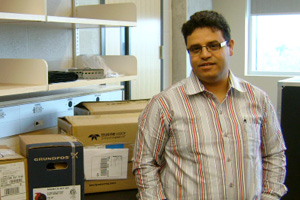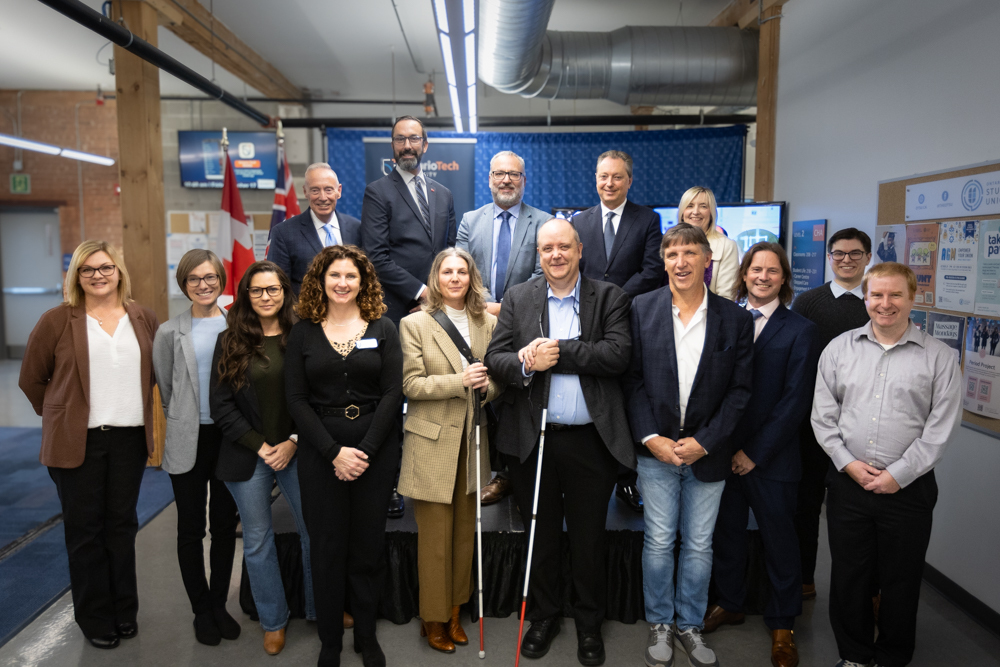UOIT researcher teaming with Oakville company to help Canadians reduce water consumption
June 16, 2014

Canada is a country blessed with a wealth of natural resources, a list that includes reliable access to clean water. Despite enjoying this abundance, Canadians are also notorious water wasters. Environment Canada says each Canadian uses an average of 350 litres of water a day: the second-highest consumption rate in the world, next to the United States. Canadians use twice as much water as Europeans.
University of Ontario Institute of Technology (UOIT) researcher Dr. Mohamed Youssef is partnering with Oakville, Ontario-based water pump manufacturer Grundfos Canada on an innovative solution to help Canadian institutions minimize water consumption and at the same time better manage their electrical energy use.
Dr. Youssef, an Assistant Professor in UOIT’s Faculty of Engineering and Applied Science (FEAS), and Grundfos are working together to develop a new ecologically friendly pump system. The research is being supported with a $100,000 grant from Ontario Centres of Excellence (OCE) through its Voucher for Innovation (VIP) program.
“Canadians like to think our water supply is limitless, but the truth is we need to do a better job of managing it as a resource,” said Dr. Youssef. “Many water pumps within our infrastructure were designed more than a half-century ago, when water usage and electricity consumption levels were not significant factors in the development of systems. We are applying energy-efficient technology in modernized pump systems to help change that mindset.”
Grundfos Canada recently replaced the aging 100-horsepower (HP) boosting system at Toronto General Hospital with a more-efficient 45 HP system. The hospital has chopped water pump electrical power consumption by more than 50 per cent and dramatically cut water use.
“Our company is committed to sustainable development and delighted to be working with the University of Ontario Institute of Technology to improve water pump system efficiencies,” said Chris Hartwick, Ontario Sales Manager, Grundfos Canada. ‘We are achieving this with Dr. Youssef through system design changes and the integration of improved technology. Grundfos is completing similar projects in other locations through pump audits and infrastructure reviews.”
By teaming with UOIT’s FEAS, Grundfos is looking to improve its research and development (R&D) footprint in Canada. The company currently allocates four per cent of its annual budget (about $300 million worldwide) on R&D.
“I am confident our research program will grow with our new system designs,” said Dr. Youssef. “The business case is very promising. Many Canadian homes have a water pump. Improving the energy use of these systems will lead to hundreds of millions of dollars in long-term energy savings for consumers. And hopefully we will help improve Canada’s water consumption image.”



